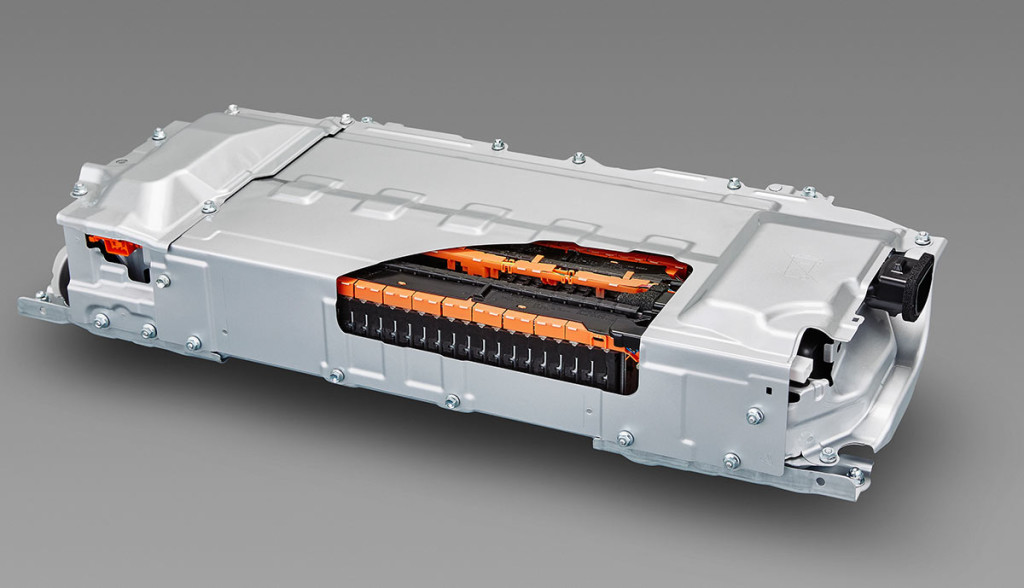2016 Toyota Prius will come with 2 choices of batteries
Toyota Motor Corp. is rolling out its next-generation Prius hybrid with a choice of newer-generation lithium ion or more traditional nickel-metal hydride batteries. The power packs cost the same to make, deliver basically the same performance and provide almost the same fuel economy.

Lithium ion batteries such as this will go into upper-trim cars, the standard base model will have nickel-metal hydride batteries.
So why bother?
It’s because the lithium batteries are 35 pounds lighter, and will be installed in upper-trim cars.
That will enable Toyota to pack an additional 35 pounds of goodies into higher-end models and achieve the same performance, says Kouji Toyoshima, chief engineer of the Prius.
“In higher grades, the mass is increased so it’s harder to get good fuel economy. So in those we will use lithium ion batteries,” Toyoshima said at a Nov. 13 test drive here.
“We’re adjusting it to the mass,” Toyoshima said. “So whatever grade it is, the fuel economy will be the same. Even if it’s a higher grade the fuel economy won’t be bad. It will be good.”
The lighter batteries will help offset the rising curb weight of the heaviest Prius. The basic Japan-spec fourth-generation car weighs 2,998 pounds, 22 pounds more than the outgoing version and 309 pounds more than the first generation that debuted in 1997.
The decision aims to make it so that all versions get about the same fuel economy.
A stripped-down Eco version for the U.S. will get better mpg, however.
In the U.S. the Prius Two Eco trim level will achieve 53 mpg in combined city-highway driving, while the five other trim levels are EPA rated at 50 mpg combined.
The next Prius goes on sale in Japan next month and in the United States early next year. But the company has said that in its home market, certain versions will achieve fuel efficiency of 40 kilometers per liter, as measured under Japan’s domestic testing cycle.
That equates to around 94 mpg. But the Japanese figure does not convert directly into an EPA rating because the testing cycle is considered less stringent than the EPA’s.
Toyoshima expects global Prius sales to be divided 50-50 between lithium ion and nickel-metal hydride batteries.
The lithium ion packs cost about the same to manufacture as the nickel-metal hydride because they use only 56 cells, compared with the 168 cells in the nickel-metal packs, Toyoshima said. Voltage is similar: 207.2 volts for lithium, 201.6 volts for nickel-metal.
The two batteries are also about the same size. The lithium batteries are 30.5 liters (1.1 cubic feet), while the nickel-metal ones are 1.25 cubic feet. Both are smaller than the outgoing battery, and that allows them to be placed under the back seat to free more storage space in the rear.
It may be a misnomer to think of the next Prius’ nickel-metal hydride batteries as “old,” even though Toyota has been using that basic battery technology for 18 years.
Engineers tweaked their formula for improvements this time. The new nickel-metal batteries are 2.4 percent lighter, 10 percent smaller, and recharge 28 percent faster.
